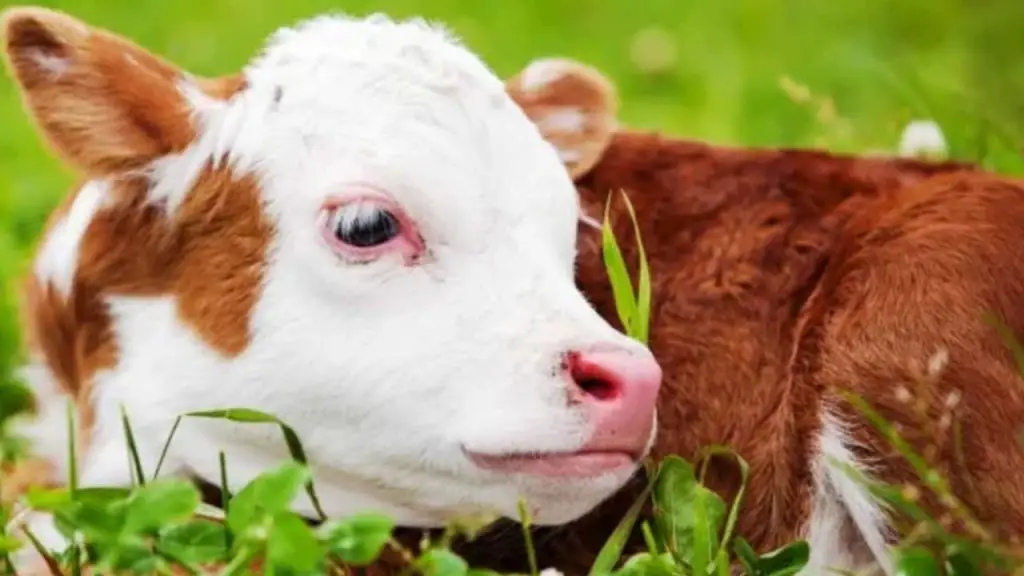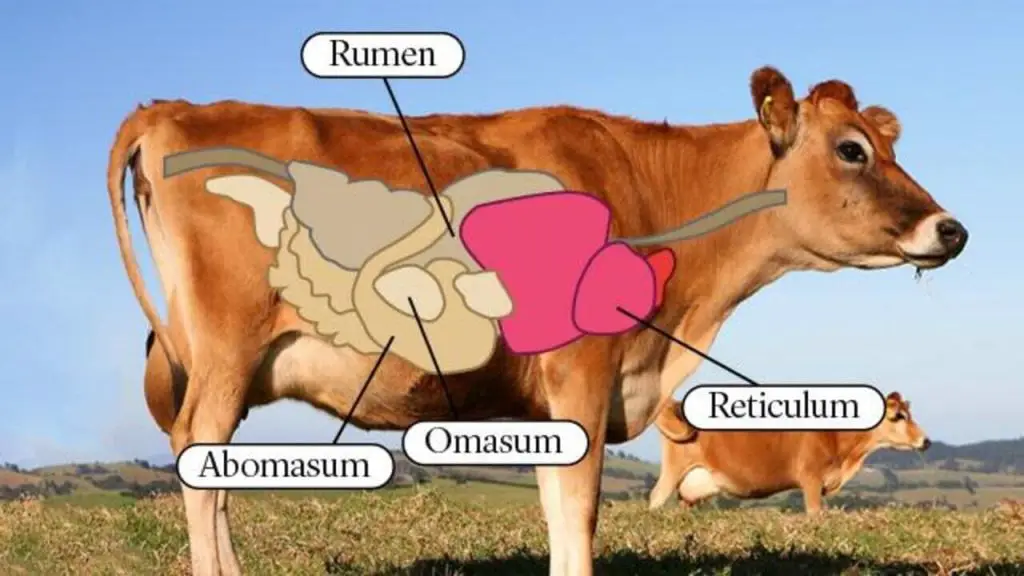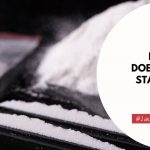Do you know how many stomachs does a cow have? What about how they digest food? In this article, we will take a look at some fascinating facts about cows. Farmers have been taking care of cows for centuries, and there is a reason why.
Cows are interesting creatures with complex digestive systems that allow them to eat grass and other vegetation. We will also discuss why good care is needed and the four compartments in the cow’s stomach. Let’s begin.

Do Cows have 4 Stomachs?
Cows do not have four stomachs. Cows have only one stomach with four compartments and eat differently from humans.
Humans are versatile food digesters that may consume plants as well as animals while still extracting the required amounts of sugar from the eaten meals’ cell walls.
However, as our digestive systems aren’t equipped to break down fibrous or thick vegetation, we can’t get energy from raw grass and dense foliage.
Cows are ruminated since they must consume tough-to-digest plants, such as grass. Their digestive systems must be strong and efficient enough to break down such meals.
Cows’ stomachs also break down and absorb more nutrients when they regurgitate and re-chew their food, which is another way in which they extract more nutrition.
Cows, on the other hand, have four compartments because they are fed by grass. Most animals only have one compartment because they consume their food through its nutrients.
Although grass is a cow’s primary source of nutrition, many additional leaves and plants contribute to its diet. The disadvantage of grass is that it isn’t very digestible or nutritionally rich when eaten in small amounts.
Compartments of the Stomach

The four compartments of a cow’s stomach each perform their function and have certain distinguishing features listed below.
1. Rumen
The rumen is the first and greatest compartment of a cow’s stomach. At any one moment, the rumen can contain up to 50 gallons of half-chewed food. It contains enzymes that break down complex food components as well as cellulose.
The rumen also serves as a huge tank filled with a wide range of bacteria and food. It is an enormous fermentation vat full of 200 different types of bacteria and 20 distinct species of protozoans.
2. Reticulum
The next portion of the stomach is known as the reticulum. The reticulum is also referred to as the ‘hardware’ stomach since it houses bacteria. This also allows the cow to re-chew its meals and regurgitate them.
The rumen and reticulum have separate roles. Because the reticulum does not contain any acid, when a cow regurgitates its food, it doesn’t taste foul.
If a cow eats something inedible while munching on the feed, such as metal or wood from fences, the reticulum expels it. The consumed grass is also softened and broken down by the reticulum into tiny pieces of cud.
3. Omasum
The omasum is the third section of the stomach, characterized by folds that increase absorption surface area, especially 4-5 square meters.
The omasum is made up of numerous folds that make it hard, with a solid surface that absorbs 30-60% of total water intake and critical minerals including sodium and potassium. The folds also prevent large particles from flowing through the cow’s digestive system.
4. Abomasum
The abomasum, sometimes known as the “real” stomach in ruminants, is the cow’s fourth compartment. The abomasum works similarly to a human stomach in that it absorbs nutrients and enzymes from food and rumen bacteria.
It is linked to the intestines and contributes to the digestion of dietary protein and ruminal microorganisms by generating gastric juices.
Cows: How Do They Eat Grass?
Their teeth are 32 in number and have two canines and six incisors. A dental pad is placed over the cow’s maw, with the bottom front canine pairs with one on top. They may eat large quantities of grass at once thanks to their jaws.
When cutting through the grass, the canines in their mouths operate similarly to incisors. The front teeth are separated by a significant gap. The distance between the teeth helps them to grind grass from side to side using their mouths.
Before the grass reaches the stomach, it must be completely chewed. Cows are known to chew for surprisingly long periods of time, often eight hours a day. Cows consume huge mouthfuls of grass in order to consume as much food as possible in a hurry.
It helps cows survive in the wild by restricting how long they are exposed to predators because they can eat more quickly and avoid being spotted.
Cows swallow the grass in big mouthfuls until their rumen is full. The grass then goes to the reticulum after it has passed through the rumen. The partially chewed grass sits in these storage vats, which are located in the first two stomach chambers.
The regurgitation of grass from the rumen into the reticulum is part of the process. The cows then re-chew the grass from the rumen and start chewing it again in the reticulum.
This act of chewing cud is also referred to as breaking down food with your teeth. After the first two compartments do their job and break down food into smaller particles, it’s carried over to the omasum and abomasum for further digestion.
Why Good Care is Taken by the Dairy Farmers?
The rumen of a cow is especially efficient in extracting nutrients from hard-to-digest foods. This is why, after the grains have been harvested, cows can readily consume stems, shells, seed coats, and other plant components.
These by-products are sometimes known as leftovers. They don’t have to be disposed of, and they may even be sold as cow feed. This also helps farmers and other businesses save money because they no longer have to pay for by-product disposal.
When grains are used to produce fuel ethanol, brew alcohol, or extract oil, by-products are produced. During the procedure, vital minerals including proteins, sugars, and fats are taken from the grains; however, the remaining by-products are fed to cattle.
These by-products are edible for cattle because of the efficient action of the four compartments, as well as the bacteria in their rumen. This is why farmers and dairy employees can manage their herds successfully to produce nutritious milk and meat for human consumption.
Conclusion
Cows are able to extract nutrients from plants that humans cannot. The four stomach compartments, as well as the bacteria in their rumen, help cattle break down by-products so they can be used for food.
This is why good care is taken by dairy farmers. not only for the cows’ health but also for the quality of the milk and meat that they produce. Also, by-products from the production of fuel ethanol, brew alcohol, and extract oil can be used as cattle feed.
This helps businesses save money on disposal costs while providing a nutritious food source for cows.
Additional Contents


